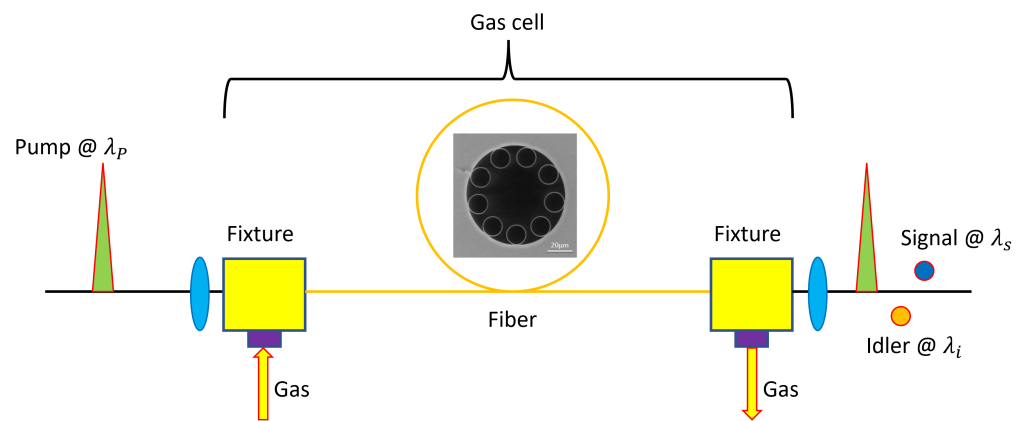
Hollow-core fibers for Optical Communication QUantum Sources
The goal of the project is the development of a platform for generation of photon pairs in gases using hollow-core inhibited-coupling microstructured optical fibers, by applying innovative hollow-core fiber modelling and experimental techniques.
Quantum communication technologies are reaching maturity, going from lab to applications in a few years; an optical source is needed to emit photon pairs bound by quantum entanglement, permitting them to share their quantum state across time and distance, rising as a highly researched field, where novel solutions are highly sought for viability at industrial performance and reliability ratings.
Available generators are mainly based on solid nonlinear media such as bulk crystals on solid-core silica fibers, each having distinct issues.
Unlike solid-core fibers, in hollow-core microstructured fibers light is guided into an empty space. This limits photon-silica interaction, thus hollow-core fibers outperform solid-core fibers, both because this limited interaction avoids photon decoherence and because guidance avoids total internal reflection, reducing latency and mode field overlap with glass. This also removes detrimental light wave effects from external fluctuations caused by the thermo-optic and elasto-optic effects in solid glass, and avoids a solid-state crystals issue, i.e. difficult and inefficient crystal-fiber coupling.
The hollow-core fiber can be mounted between two gas fixtures, becoming an hermetically sealed gas cell to be filled with gas at precise pressure to exploit its non-linear properties. Its long light-gas interaction ranges in short spaces enable a two-photon absorption mechanism that results in high emission probability of photon pairs, one of which is a telecom wavelength single photon with high quantum state purity. This and the versatility of an hollow-core platform in tuning and engineering the photon spectral correlation by adjusting gas pressure is opening a new technological path to low cost and robust quantum communication networks.
The project will develop simulation models and techniques that allow to model the non-linear phenomena that underpin the generation of photon pairs, in order to analyze and design the prototype of the source and tune its performance, by also taking into account the non-idealities of hollow-core fibers and how they impact their performance in quantum telecommunications applications. It will also develop an experimental setup to measure the performance of these fiber systems, using commercial hollow-core fibers of different specifications available on the market.
We envision a low-cost entangled photon source directly built out of a hollow-core fiber, so that there is high technological compatibility with the fibers proposed for high-coherence quantum state transmission and the source can be directly spliced into quantum fiber communication systems.

Project Info
- Partners:
- UNIMORE
- UNIPR
- Duration:
- 2 years
- Project type:
- PRIN

